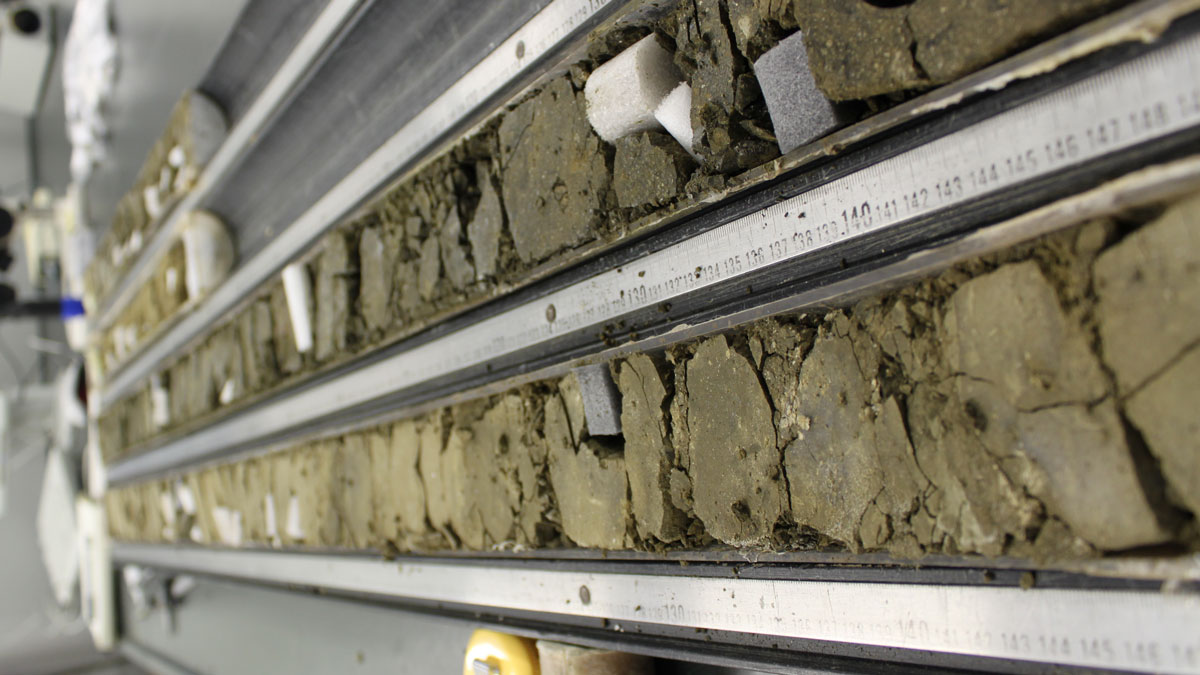Fifty-six million years ago, Earth endured a heat wave that lasted 170,000 years. The event, known as the Paleocene-Eocene Thermal Maximum (PETM), ushered in a wave of evolutionary shifts. New research published in Nature Geoscience suggests a massive belch of carbon from deep below the northern Atlantic Ocean could have played a key role.
“[The PETM] was one of the most extreme global warming events in the recent geologic past.”
“[The PETM] was one of the most extreme global warming events in the recent geologic past,” said Thomas Gernon, a geologist at the University of Southampton. The warm spell raised sea surface temperatures roughly 5°C, acidified the oceans, and wiped out some deep-sea creatures.
What makes the PETM so unusual is its rapid onset, said James Zachos, a paleoceanographer at the University of California, Santa Cruz, who researches the event but was not involved in the new study. “The rate of [carbon] emissions had to be really high—almost the same order of magnitude as fossil fuel emissions.” That suggests multiple sources of carbon, he said.
Gigatons of Carbon
Previously, scientists had suggested the carbon came from hydrothermal vents on the ocean floor. Magmas within mid-ocean ridges would have heated up surrounding mudrocks, releasing methane (CH4) through the vents. Later evidence indicated that the isotopic makeup of such releases did not match that seen in fossilized organisms that would have taken this carbon up into their shells.
Volcanism, however, could release the isotopic mixture of carbon consistent with the fossil evidence. And there were active volcanoes at the time: The North Atlantic Igneous Province (an expansive volcanic field covering parts of Greenland and the United Kingdom) was erupting 1.8 million square kilometers of basalt—and along with it, loads of carbon.
“It’s really hard to get that much carbon from conventional volcanic processes.”
Researchers have calculated that 10,000–15,000 gigatons of carbon were required to cause the shifts in global climate seen during this time.
“It’s really hard to get that much carbon from conventional volcanic processes,” Gernon said. He and his colleagues found that typical volcanism in the province could account for only one fifth of the carbon needed to cause the PETM, suggesting an even larger source was present.
Archived Cores Give New Information
Gernon has been working on sediments and volcanics in the North Atlantic for the past decade, but only during the COVID-19 pandemic did he have the chance to dive deep. The opportunity to research presented itself “kind of serendipitously during the lockdown—you know, when you turn to that data and that project you didn’t quite finish,” he said. “I gave some time to focus a bit and think more about it.” That thinking led to a new idea about carbon in the North Atlantic.
Gernon and colleagues examined volcanic rocks in sediment cores drilled from several locations in the region. The cores—shrink-wrapped since the early 1980s—held geochemical information about the volcanics erupted during the PETM.
“There are all these amazing archives,” Gernon said. Cores sit in these repositories for decades, waiting to be analyzed.
The abundance of tuff deposits—ash-laden volcanic rocks—within the cores indicated that a sudden burst of volcanic activity accompanied the warming event. Additionally, the composition of lavas within the province suggested that the volcanic rocks came from deep in the lithosphere.
Carbon from the Stretched Lithosphere
Prior to the birth of the North Atlantic, the region sat atop an old piece of continental crust (craton) of the supercontinent Pangea. The bottoms of such cratons are plated with carbon-rich rocks—carbonates—that are stable at the high pressures present beneath 100-kilometer-thick continents.
Coincident with the PETM, rifting within Pangaea advanced to seafloor spreading and, ultimately, the opening of an ocean. During this stretching of the lithosphere, carbonates in the craton were entrained into the rising asthenosphere, according to the researchers. As the carbonates were brought closer to the surface, pressure on them decreased, causing the rocks to melt and release carbon dioxide (CO2). “You’re dragging that carbon from the base of the plate, effectively out of its comfort zone,” Gernon said.
The belch of CO2 was short-lived, said Gernon, but big. Models indicate that the carbonates would have melted just before seafloor spreading started, when the lithosphere separated. Simulations of melting showed that the amount of carbon released could account for the warming during the PETM.
“It’s kind of amazing how much carbon [was released so quickly],” Gernon said.
The study proposes an interesting mechanism for carbon release during the PETM, said Sev Kender, a paleoceanographer at the University of Exeter who was not involved in the study. But there were likely other sources of carbon contributing to the rise in temperature besides volcanism, he said, such as melting permafrost. The idea of multiple sources of atmospheric carbon was echoed by Zachos.
Kender and colleagues previously showed that intense volcanic activity, though a significant source of carbon, did not last through the entire PETM onset. “It looks like volcanism may have triggered some other kind of secondary release of carbon, like a tipping point,” he said.
—Jennifer Schmidt (@DrJenGEO), Science Writer

